Hiroshima inviting you to a rumination over peace
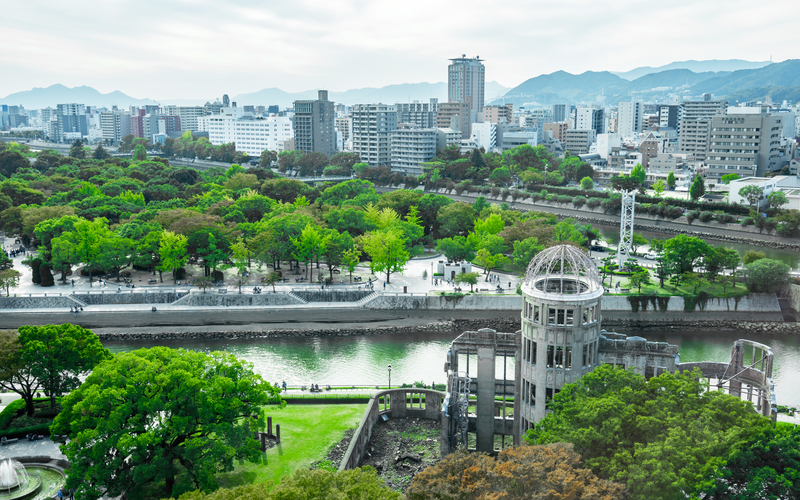
Hiroshima
Walking aound the most busy streets in Hiroshima and a building makes a sudden appearance which is decayed and naked with just steel frames, not matching the modern city. This the Atomic Bomb Dome. People in the city of Hiroshima have kept many things including this dome in order to communicate the disastrous tragedy of the A-Bomb to the next generation. That is this area.
This land is now full of water and green, though it was said that no greens would grow for at least 75 years after exposure to the radiation. So you'll really feel the energy of the city having made a great revival, and things which still show us how the old days were.
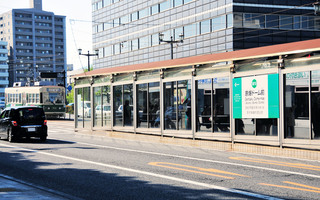
A Genbaku Dome-mae Station
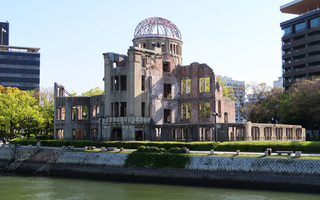
B The Atomic Bomb Dome
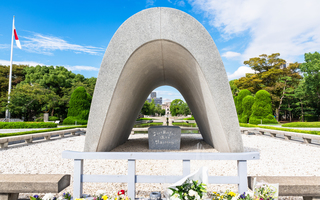
C Hiroshima Peace Memorial Park
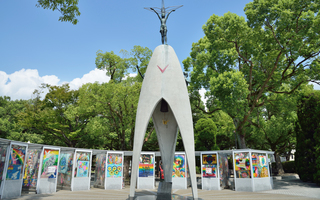
D Children's Peace Monument
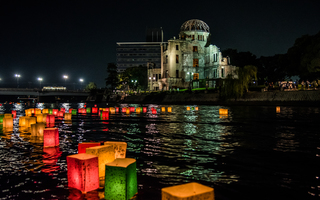
E Motoyasugawa River
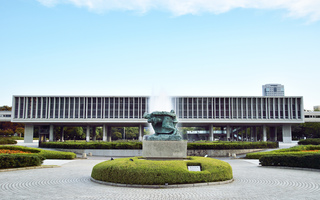
F Hiroshima Peace Memorial Museum
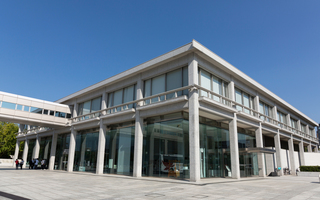
G International Conference Center Hiroshima
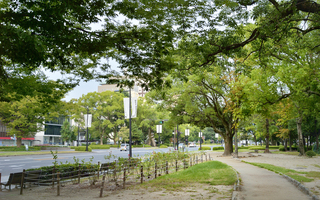
H Peace Boulevard
I Orizuru Tower
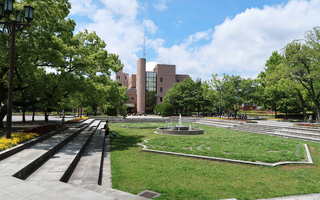
J Hannover Garden
A
Genbaku Dome-mae Station

This station in front of the Atomic Bomb Dome is one of the stops of the Hiroshima-Dentetsu, also known as the streetcar called ""Chin-chin tram."" This tram, as one of the symbols of Hiroshima, has run since before the war and is said to have restarted its operation just 3 days after the drop of the A-Bomb even with a totally burned car. Female students served as conductors at that time and they bravely got onto the train to fulfill their mission, though they also suffered from the disaster. How people were encouraged by the tram running through the city with the its cheerfully ringing bell.
70 years have passed, but it is still known as a means of transportation for citizens and tourists. More recently, new types of cars were adopted for each line and you can now also see low-floor vehicles, specialized in barrier-free systems on the number 2 line, which is called Miyajima-sen at Genbaku Dome-mae Station .
B
The Atomic Bomb Dome

You can see The Atomic Bomb Dome just in front of you when getting of the tram. It is designated as a World Heritage Site as a building which transmits the disastrous memory of the A-Bomb to the present day. It is now known by the name "The Atomic Bomb Dome" from its unique shape of the dome covering the ceiling, but before the war it was a structure called the "Hiroshima Encouragement Hall" which citizens were greatly proud of. At 8:15 am on August 6th 1945, the A-Bomb named "Little Boy" was dropped in the sky over Aioibashi Bridge just a couple of meters from there. This point, called "Ground Zero," was soon surrounded with the bomb's blast of 3,000 ℃ in a flash and those who were there, were vaporized in an instant, with not even their bones remaining. The reason why the dome could remain in such a fierce environment, is that it was constructed with steel, uncommon at that time, and the impact wave hit it from almost directly above because it stands very near to the center of the explosion.
C
Hiroshima Peace Memorial Park

The Hiroshima Peace Memorial Park is behind the Atomic Bomb Dome in the delta between the Ootagawa and Motoyasugawa Rivers, and here you can really feel what Hiroshima is as "a city of water and green." Cross the bridge and you'll soon see a flat stone with a flame on it. This is called the "Flame of Peace" and it was ignited on August 1st during the 19th memorial of the war by 7 women born on the very day the A-Bomb was dropped. Since then, it has been blazing along with the idea to keep it aflame until all the nuclear weapons on the earth disappear. On the surface of "the Cenotaph for the A-bomb Victims" behind the flame, these words are engraved: "Let all the souls here rest in peace; For we shall not repeat the evil." And the stone chest holds a registry of the names of persons who died from the bombing.
Every year, the Hiroshima Peace Memorial Ceremony is held on August 6th and many people in the world visit here for consoling, including those who are the victims of the A-bomb and their living family.
D
Children's Peace Monument

Walking along the Motoyasugawa river, you'll see a child's statue holding an orizuru with both of her hands. This is the ""Children's Peace Monument."" It is always bright, even from a distance with many colorful orizurus offered to it. Nowadays, orizuru is thought to be a symbol of peace, but it started with just a girl named Sadako Sasaki.
Sadako wasn't injured when she experienced the bomb and grew up healthy. However, after 9 years, leukemia appeared when she was in 6th grade of elementary school. It was the aftereffect of the A-Bomb. She continued to make oriuzurus from the medicine papers she used everyday, because she believed that her dream would come true if she made a thousand orizurus. However, she died 8 months after the appearance of the disease. Afterwards, a monument was built to console the spirits of children who died from the bomb. Her story has spread throughout the world and a-thousand-orizurus are sent here everyday from all over the world.
E
Motoyasugawa River

At the Motoyasugawa river, which flows on the east side of the Peace Memorial Park, a ceremony called ""Toro-nagashi"" is held from the evening to the night on August 6th. Toro-nagashi is a ceremony to console the spirits of those who died, by floating lanterns on the river. On that day, many lanterns are put on the water, wishing for peace, as well as mourning those who died during the war. Everyone can buy a lantern at the shops along the river.
Interestingly, across Motoyasu Pier, over the river, ferries cruise everyday straight to Miyajima island which is the other World Heritage Site in Hiroshima. So this course is called the ""World Heritage Route."" You can get there quicker and easier than by train, even though the ferry is not very fast. How about enjoying the calm wind of Seto Island's sea?
F
Hiroshima Peace Memorial Museum

Travel further into the Peace Memorial Park and a modern contsruction made from three connected buildings will be seen. The left and the center buildings are the Hiroshima Peace Memorial Museum. The real personal effects of those who were exposed to the radiation are displayed, as well as the images and models of people and the city of Hiroshima of that time. Hiroshima has kept appealing for the denuclearization of the world as one of the cities which knows the real dreadfulness of the Atomic Bomb.
As a part of the tour, you can learn the risk of nuclear weapons on the 3rd floor of the east building. In addition, the Peace Watch Tower is displayed on the 1st floor. The upper digital watch counts the days since the bombing of Hiroshima and the lower watch shows the days since the latest nuclear test was held on earth. It still continues counting the days wishing for all the nuclear weapons to disappear from the world.
G
International Conference Center Hiroshima

On the other side of the Peace Memorial Museum, is the Hiroshima International Conference Center. This building was constructed in 1989 to help Hiroshima be better known to the world as a city of peace. Various kinds of events, like: concerts, lectures, and exhibitions are held almost everyday in the many sizes of halls, and its citizens make use of it quite often. Especially on and around August 6th, many peace events are held in each hall.
These halls are also used for international conferences because of its name, and it has been adopted for big international conventions. This building serves an important role as a place to let the dignitaries of each country rethink the importance of peace.
H
Peace Boulevard

Just beyond the Peace Memorial Park, lies a wide road. This is Peace Boulevard, also known as the 100-meter-road to its citizens. This boulevard was originally constructed as a fire-belt to prevent fire from spreading by the air raids. However, it didn’t completely work against the incredibly destructive A-Bomb.
After the war, even against a batch of opposition, the street was revived and many trees were planted along it. It has been seen as one of the symbols of the recovery of Hiroshima, as it was said to be a land where no greens could grow for at least 75 years. Nowadays, it is loved by its citizens far beyond being just a boulevard, as an event called the ""Flower Festival"" is held here in May and the street is decorated with lights during Christmas season.
I
Orizuru Tower
After enjoying the Hiroshima Peace Memorial Park and Peace Boulevard, we come back to the Genbakudome-mae station. The next destination is Orizuru Tower. This building stands just in the midpoint of Genbakudome-mae station and Kamiyacho-nishi station. Opened in 2016 and it's already loved by not only tourists, but citizens too. The top floor, is a deck made of wood called the "Hill of Hiroshima" and wind blows though its space. Of course, you can see the Atomic Bomb Dome and the Hiroshima Peace Memorial Park from here, but on a clear day you an also get a view of Mt. Misen in Miyajima. In "Orizuru Park," on the 12th floor, you can make an orizuru with special paper and then throw it towards the "Orizuru Wall" right next to the park. This wall has already become a symbol of peace by the collected orizurus that visitors have thrown.
J
Hannover Garden

Behind the Former Hiroshima Municipal Stadium, there is a green zone called ""Hannover Garden."" This garden is named after the city of Hannover in Germany, which is a sister city of Hiroshima. It is a sunken garden imitating a part of the Gardens of Herrenhausen in Hannover. Its distinguishing point is that the whole garden is in the shape of the crest of Hannover.
Hannover had great damage from the war, as well as Hiroshima, so both cities made a sister city relationship wishing for peace. There remains a church in Hannover whose cieling was sunken by air raids, inside that church hangs a bell given by Hiroshima.